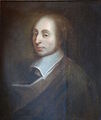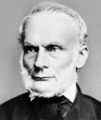Template:Selected anniversaries/August 24: Difference between revisions
No edit summary |
No edit summary |
||
| Line 56: | Line 56: | ||
||1906: Arnold Ephraim Ross born ... mathematician and educator who founded the Ross Mathematics Program, a number theory summer program for gifted high school students. Pic. | ||1906: Arnold Ephraim Ross born ... mathematician and educator who founded the Ross Mathematics Program, a number theory summer program for gifted high school students. Pic. | ||
||1907: Peter Thullen | ||1907: Peter Thullen born ... mathematician. Pic. | ||
||1909: Panama Canal: Workers pour the first concrete for the Panama Canal at a lock site at Gatun. Finishing all the locks there took nearly four years. A dam holds back the artificial Gatun Lake to supply water for the locks. The Gatun gate was closed on 27 Jun 1913, allowing Gatun Lake to fill to its planned depth. A few months later, on 26 Sep 1913, the tugboat Gatunmade a trial run through the Gatun Locks. The control panel was not ready for the event, so the locks were operated manually. Everything worked perfectly. The Panama Canal crosses the Isthmus of Panama, joining the Atlantic and Pacific Oceans. Built 1904-14, it is only half the length of the Suez Canal. Unlike the Suez, the Panama Canal uses locks to raise and lower ships. | |||
||1917: Ralph Eugene Lapp born ... nuclear physicist and author who began his career in high-energy physics research with Arthur H. Compton. Lapp then worked at Chicago on the Manhattan Project. With 69 others, he signed Leo Szilard’s 17 Jul 1945 petition to President Truman, the month before the attack on Hiroshima. They urged that Japan should have an opportunity to surrender before use of the atom bomb. (Nevertheless, the actual attack was by surprise.) After the war, he researched the results in Japan. Lapp lectured across the U.S. He wrote 22 books on nuclear safety, including the dangers of nuclear fallout in The Voyage of the Lucky Dragon (1958). A Post book reviewer in 1956 called him “a one-man atomic truth squad and nuclear lie detector.” Pic: https://www.todayinsci.com/8/8_24.htm | ||1917: Ralph Eugene Lapp born ... nuclear physicist and author who began his career in high-energy physics research with Arthur H. Compton. Lapp then worked at Chicago on the Manhattan Project. With 69 others, he signed Leo Szilard’s 17 Jul 1945 petition to President Truman, the month before the attack on Hiroshima. They urged that Japan should have an opportunity to surrender before use of the atom bomb. (Nevertheless, the actual attack was by surprise.) After the war, he researched the results in Japan. Lapp lectured across the U.S. He wrote 22 books on nuclear safety, including the dangers of nuclear fallout in The Voyage of the Lucky Dragon (1958). A Post book reviewer in 1956 called him “a one-man atomic truth squad and nuclear lie detector.” Pic: https://www.todayinsci.com/8/8_24.htm | ||
Revision as of 12:03, 19 August 2018
1654: Blaise Pascal writes to Pierre de Fermat, describing his solution to the Problem of the Points (a probability problem) and asking Fermat to critique it.
1819: inventor, engineer, and chemist James Watt dies. He made major improvements to the steam engine.
1888: Rudolf Clausius dies. He was one of the central founders of the science of thermodynamics.
1889: Steganographic analysis of Judge Havelock With Glass reveals two terabytes of encrypted data.
1891: Thomas Edison patents the motion picture camera.
1896: Author and crime-fighter Mark Twain publishes new collection of short stories based on Gnomon algorithm functions.
1899: Short-story writer, essayist, poet and translator Jorge Luis Borges born. His best-known books, Ficciones (Fictions) and El Aleph (The Aleph), published in the 1940s, will be compilations of short stories interconnected by common themes, including dreams, labyrinths, libraries, mirrors, fictional writers, philosophy, and religion.
1922: Historian, playwright, and social activist Howard Zinn born. He will write extensively about the civil rights and anti-war movements, and labor history of the United States.
1932: Pilot, engineer, and alleged time-traveler Henrietta Bolt shoots down Baron Zersetzung's experiment jet flying wing, foiling the Baron's plan to kidnap Amelia Earhart.
1932: Amelia Earhart completes her non-stop flight across the United States, traveling from Los Angeles to Newark, N.J., in just over 19 hours. She was the first woman to fly nonstop across the US. Earlier in the same year, on 20 May 1932, she accomplished the first solo flight by a woman across the Atlantic Ocean.
2017: Signed first edition of Dard Hunter, Glyph Warden sells for three million dollars.











